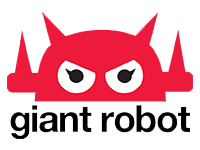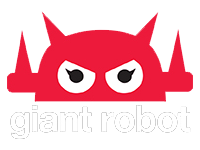Kebabs To Tōhoku, v1.0
What follows is a brief report on the most recent of my trips to the disaster-afflicted areas in Tōhoku. Refer to my GR piece about the four trips I took to the North during the first month of the disaster.
 As I reported previously, Kazu, my brother-in-law in Onagawa, and I had devised an (admittedly vague) guerilla-style plan to distribute doner kebab, pita sandwiches, and possibly ice cream to those in need. Typically, Kazu drives his truck into Sendai and sells pita sandwiches as o-bento lunch for office workers there, and he recently augmented his truck with a Dairy Queen-type ice cream maker to entice local customers. (Though Sendai is a good-sized metropolis, Onagawa is a small fishing town, and kebab considered quite exotic there.) Obviously, the Tōhoku disaster brought business to a screeching halt. With no electricity to power the refrigeration at home, and no petrol for the truck or generator, Kazu had given away all his remaining stock to survivors the first day after the quake and tsunami, and the truck had sat idle in his backyard since. So, we envisioned, I’d re-supply him with fresh ingredients (meat, veggies, pita, yogurt, and ice cream) and he’d give away hot meals to folks living in the refugee centers. Or something like that. You hear about kids in the early days of Japan’s occupation, now in their seventies, fondly recalling the taste of chocolate and bubble gum given them by GIs; perhaps a generation of kids will grow up in Tōhoku with similar memories of their first kebab.
As I reported previously, Kazu, my brother-in-law in Onagawa, and I had devised an (admittedly vague) guerilla-style plan to distribute doner kebab, pita sandwiches, and possibly ice cream to those in need. Typically, Kazu drives his truck into Sendai and sells pita sandwiches as o-bento lunch for office workers there, and he recently augmented his truck with a Dairy Queen-type ice cream maker to entice local customers. (Though Sendai is a good-sized metropolis, Onagawa is a small fishing town, and kebab considered quite exotic there.) Obviously, the Tōhoku disaster brought business to a screeching halt. With no electricity to power the refrigeration at home, and no petrol for the truck or generator, Kazu had given away all his remaining stock to survivors the first day after the quake and tsunami, and the truck had sat idle in his backyard since. So, we envisioned, I’d re-supply him with fresh ingredients (meat, veggies, pita, yogurt, and ice cream) and he’d give away hot meals to folks living in the refugee centers. Or something like that. You hear about kids in the early days of Japan’s occupation, now in their seventies, fondly recalling the taste of chocolate and bubble gum given them by GIs; perhaps a generation of kids will grow up in Tōhoku with similar memories of their first kebab.
And, after all, who doesn’t like a good ice cream cone?
 First task: acquiring 60kg of Australian topside beef in 5mm slices, and 3kg each of minced lamb and beef. Lack of power, and brownouts in some dairy-producing parts of Japan have made yogurt scarce as well (I’d recently heard about a friend’s wife outsmarting supermarket restrictions on dairy purchases by lining up in disguise). And, then, several kilos of fresh cabbage and tomatoes. Issaku, owner of my favorite Tokyo izekaya, had the meat delivered to me on ice (no point trying to cram that much into my fridge); and Mo, a brother-in-law living in Tokyo, collected requisite yogurt and vegetables. So far, so good. I also agreed to give a ride up north to Gome, a young rapper and skateboarder whose best friend was 3rd AD on my second feature, and who’d lost touch with his family in Onagawa. During the drive north Gome would keep us alert with his hip-hop demos.
First task: acquiring 60kg of Australian topside beef in 5mm slices, and 3kg each of minced lamb and beef. Lack of power, and brownouts in some dairy-producing parts of Japan have made yogurt scarce as well (I’d recently heard about a friend’s wife outsmarting supermarket restrictions on dairy purchases by lining up in disguise). And, then, several kilos of fresh cabbage and tomatoes. Issaku, owner of my favorite Tokyo izekaya, had the meat delivered to me on ice (no point trying to cram that much into my fridge); and Mo, a brother-in-law living in Tokyo, collected requisite yogurt and vegetables. So far, so good. I also agreed to give a ride up north to Gome, a young rapper and skateboarder whose best friend was 3rd AD on my second feature, and who’d lost touch with his family in Onagawa. During the drive north Gome would keep us alert with his hip-hop demos.
 I rented a 6-seater van (called, delightfully I thought, a “Bongo“) the day before setting out and rode out to Asakusa-bashi to stock up with relief supplies at Second Harvest Japan, the food bank for which I’d already made a couple relief runs to the North. Charles McJilton, director of Second Harvest, loaded me up with about 300 bananas, 40 cases of fig cookies (donated by the French), and several boxes of canned fruit, and gave me a target: a school doubling as a refugee camp in Natori City, en route to Onagawa. But Charles also warned me that a couple drivers had recently been turned away at their destinations. Multiple governmental and non-governmental organizations are now supplying the North, but unavoidable overlap and, alternately, poor coverage in the various towns and villages affected have resulted in some points oversupplied, while others still lack the basics. Meanwhile, national and local bureaucratic controls have tightened, making it difficult for many grass-roots volunteer parties to get through. So, I told Charles, I’d stop off in Natori and see if they’d take the supplies, but if not needed there, I’d continue north and locate an alternate beneficiary in Ishinomaki or Onagawa, my ultimate destinations.
I rented a 6-seater van (called, delightfully I thought, a “Bongo“) the day before setting out and rode out to Asakusa-bashi to stock up with relief supplies at Second Harvest Japan, the food bank for which I’d already made a couple relief runs to the North. Charles McJilton, director of Second Harvest, loaded me up with about 300 bananas, 40 cases of fig cookies (donated by the French), and several boxes of canned fruit, and gave me a target: a school doubling as a refugee camp in Natori City, en route to Onagawa. But Charles also warned me that a couple drivers had recently been turned away at their destinations. Multiple governmental and non-governmental organizations are now supplying the North, but unavoidable overlap and, alternately, poor coverage in the various towns and villages affected have resulted in some points oversupplied, while others still lack the basics. Meanwhile, national and local bureaucratic controls have tightened, making it difficult for many grass-roots volunteer parties to get through. So, I told Charles, I’d stop off in Natori and see if they’d take the supplies, but if not needed there, I’d continue north and locate an alternate beneficiary in Ishinomaki or Onagawa, my ultimate destinations.
We set off from my flat at 5:30 AM on April 14th and made good time getting up into Miyagi Prefecture, stopping a few times along the way to top off the Bongo’s gas tank (but, I have to admit, blasting through Fukushima Pref. without stopping). We got off the Tōhoku Expressway for our stop in Natori, but the only official we managed to meet at our target, Natori Fujigaoka Primary School, having been newly dragooned from her usual post in Kyōto, was unfamiliar with local procedures and unable to direct us towards any appropriate facilities. We’d read some recent newspaper headline about shortages in Onagawa, so we decided to continue on, lest our cargo spoil.
Getting to Onagawa was tricky. By the time we got close it was high tide and much of the coastal route was underwater. The land in much of the region has settled quite a bit and, in many places, the sewers overflow and the tide washes in over city streets. I’ve heard many reports of GPS-based location services and devices (iPhones, Google Maps, and car navis) having been rendered inaccurate by the quake.
I’d been up north more than once since the start of the disaster and had become somewhat desensitized by, and immune to, the sight of tsunami destruction. But riding with Gome now, I was seeing things through fresh eyes. Onagawa, previously bucolic, even picturesque, had been completely washed away by the 15-meter (50 foot!) tsunami that hit Onagawa port. The lighthouse now lying down under water, hundred-ton diesel railcars washed off their tracks, buildings on their sides (a four-storey office building inverted, concrete slab now on top, and fire escapes looking like something from an Escher painting), boats and cars deposited at the high-water mark… Gome managed to find his parents, but was told his grandfather had been washed out to sea. All that remained of the grandfather’s house was some bathroom tile.

And yet, amazingly, much progress has been made since the disaster. Japanese military (JSDF) have been clearing roads through the debris, scrapping cars, and hauling wreckage to several enormous steaming mountains of junk, divided into piles for scrap metal, wood, tires, and some other undifferentiated contents. In the center of the port, there was a line of perhaps fifty four-ton military dump trucks filled and waiting to disgorge their loads at a collection area where cranes were sorting material and dropping it onto the piles. Sorting garbage into “burnable,” “non-burnable,” and “recyclable,” as one does at home in Japan, is confusing enough, but it’s amazing to think that an entire city could be stripped to its foundations and then the resulting “garbage” separated into such piles. (I wonder if this is part of some universal “post-disaster playbook,” or a uniquely Japanese approach.)
 I dropped Gome off with his parents and then headed to my in-laws house to transfer all the kebab gear into the refrigerator (power now restored). Then Kazu and I then drove over to the Onagawa Gymnasium, site of the SDF camp and the largest local refugee facility, holding about a thousand displaced survivors. There was a guy in the parking lot there from Nelson, B.C., sister city of Onagawa, who directed us to the warehouse for receiving relief supplies and the local officials and SDF crew there quickly emptied the Bongo of all the bananas, cookies, and fruit tins.
I dropped Gome off with his parents and then headed to my in-laws house to transfer all the kebab gear into the refrigerator (power now restored). Then Kazu and I then drove over to the Onagawa Gymnasium, site of the SDF camp and the largest local refugee facility, holding about a thousand displaced survivors. There was a guy in the parking lot there from Nelson, B.C., sister city of Onagawa, who directed us to the warehouse for receiving relief supplies and the local officials and SDF crew there quickly emptied the Bongo of all the bananas, cookies, and fruit tins.
Late that night, in his parents’ candle-lit kitchen, my brother-in-law Kazu initiated me into the Brotherhood Of The Kebab and taught me the first secret steps of the two-day process for constructing the massive inverted cone of marinated meat which is the doner kebab (shawarma in Arabic, gyros in Greek). I’m not much of a meat-eater to begin with but, believe me, massaging yogurt and salt water into 60kg of thinly sliced beef and minced lamb was a uniquely gag-inducing procedure. Just remember your mission, you’re here to do a job, I kept telling myself. Of course, Kazu continued sculpting his meat towers long after I’d timed-out; he’d received an official invitation to serve up lunch to the 300 or so kids at Onagawa Daiichi (#1) Primary School two days hence, so it was essential that he move forward post-haste prepping his payload. I had to return to Tokyo for work (and to receive further deliveries of meat), and would not be present for the initial outing of “Kebab Aid,” and so we left Onagawa after a last-minute pow-wow in the Kebab War Room (Kazu’s kitchen), anxious but with high expectations for a successful first launch.
 And yesterday I finally received the first pictures of the kids eating their pita sandwiches in the classroom. Many, if not most, of these children are now homeless, and some, doubtless, orphans. But (see for yourselves) I’ve been told the operation was a great success. Kazu managed to deploy 300 servings, and then some, to several classes with the assistance of school staff. I’ve been since told that this school has merged with another in the area, but we are working to get official clearance for another school lunch or perhaps an ice cream venture. Two days ago, I sent some Tokyo friends up north on another meat run (mission accomplished), and I’m currently working on a pita bread shipment.
And yesterday I finally received the first pictures of the kids eating their pita sandwiches in the classroom. Many, if not most, of these children are now homeless, and some, doubtless, orphans. But (see for yourselves) I’ve been told the operation was a great success. Kazu managed to deploy 300 servings, and then some, to several classes with the assistance of school staff. I’ve been since told that this school has merged with another in the area, but we are working to get official clearance for another school lunch or perhaps an ice cream venture. Two days ago, I sent some Tokyo friends up north on another meat run (mission accomplished), and I’m currently working on a pita bread shipment.
More soon,
m

















































